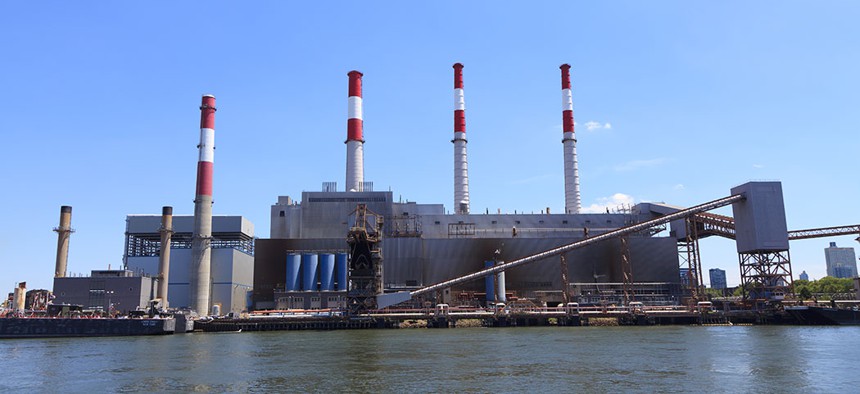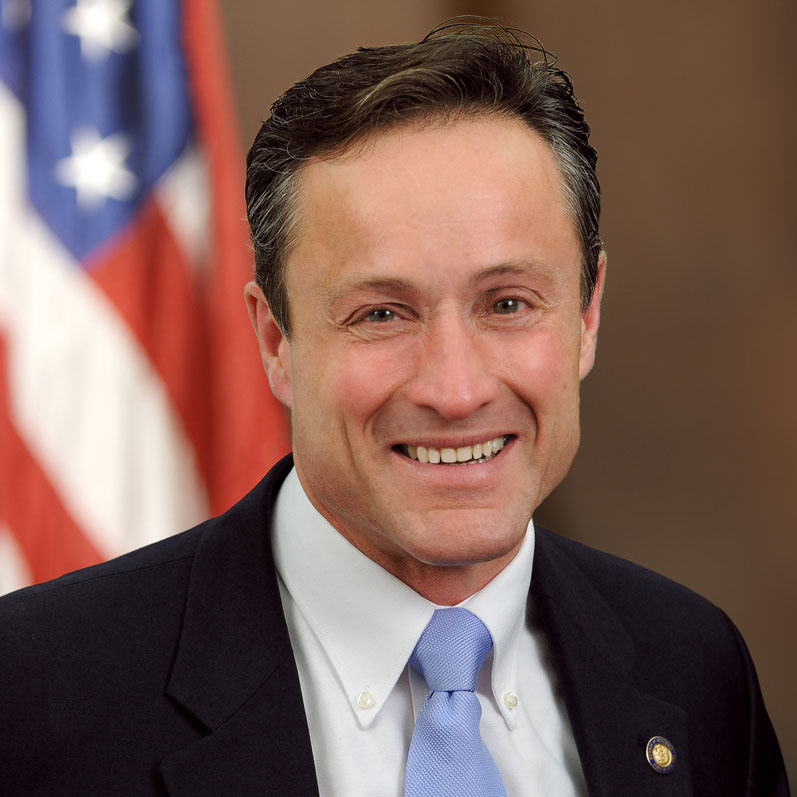New York State
Reconciling environmental protection with economic growth
City & State spoke with Region 2 administrator for the Environmental Protection Agency, Peter Lopez, to talk about the ways the EPA is investing in the creation of new and cleaner energy sources regionally and his personal philosophy on caring for the environment and the people who inhabit it.

An electric power plant located in Queens. Osug/Shuttestock
As Region 2 administrator for the Environmental Protection Agency, Peter Lopez is charged with limiting air pollution and protecting water and land in New York, New Jersey, Puerto Rico, the U.S. Virgin Islands and eight tribal nations. The primary challenge for the former state assemblyman is reconciling environmental protection with economic growth.
City & State caught up with Lopez to talk about the ways the EPA is investing in the creation of new and cleaner energy sources regionally and his personal philosophy on caring for the environment and the people who inhabit it.

What are the biggest environmental threats in New York?
In terms of the biggest threat, I think many would agree on the issue of emerging contaminants. That would probably be one of the largest and most challenging issues we’re dealing with. Relatedly, we’re focused on safe drinking water. I think those are probably two of the largest threats that we’re seeing. The challenge is how do we reconcile and address knowledge of the contaminant – detecting it, for one – and then assessing what levels of contamination constitute a threat. Then, how do we clean up where we see issues of contamination, and how do we prevent it moving forward? I think all of that is part of the national conversation, but certainly very much alive and of concern in Region 2. New York and New Jersey have a lot of legacy contamination as the result of being the cradle of the Industrial Revolution and all the impacts that stem from having incredible economic activity without a lot of safeguards in place. Legacy contamination in particular is a huge challenge for our region.
In your role facilitating the recovery process in Puerto Rico after Hurricane Maria, did you learn any valuable lessons about sustainability and how vulnerable communities can better prepare for future natural disasters?
The takeaways were numerous. First takeaway, the relative isolation created some issues, so how do we embed responsive risk capabilities on the islands more effectively? Two, we need to be thoughtful about how we engage particularly with communities that are financially and technically challenged and have real limitations. Third – this is the other piece, which I’m very excited about – is the dialogue we’re having now. We don’t want to go in and just put Band-Aids on broken pipes. We don’t want to just fix a wire and plug something back in. We had preexisting conditions that became challenges. What I’ve been advocating is to use response and recovery, where we can, as a mechanism for transforming what we saw as defective or deficient ways of operating or managing resources before the storm.
What are the challenges you face as an administrator in enforcing sustainable solutions?
I’m very passionate about this. The terms – enforcement, compliance, consent orders, unilateral action – the whole vocabulary around achieving environmental outcomes tends to have a more punitive ring to it. My honest answer is, the punitive, the sanctioning, they are important, and they certainly can secure environmental justice and compliance. But the other part of my experience has been that there may be some other ways of approaching contamination and shortcomings by understanding who exactly you’re talking to and why they’re not meeting the objectives. There may be ways of approaching it in an alternative fashion. It may be through technical assistance; it may be through some education or training; it may, in some cases, be providing new technologies or financial resources as a package to get the desired outcome.
The climate change discussion is extremely politicized. Regardless of politics, communities have to be prepared for future climate-related emergencies. Is it possible to do that at the regulatory level without accepting the basic premise that humans have a role in climate change?
You lured me in! (Laughs.) I would tell you that from the standpoint of my agency, it’s my belief that the administrator has acknowledged that humans do have an impact on the environment. I think it’s safe to say that. If humans are acknowledged as a cause of impact in the environment, that simply validates everything that we’re trying to do. The other piece of it, where I’m going to go off script a little bit, is that the U.S. is not alone and cannot stand alone in this engagement. When we look at climate change, it’s not a U.S. phenomenon, it’s not a New York phenomenon, it’s not a Region 2 phenomenon. It’s a global phenomenon. As we try to be good stewards – and this is me out on a limb, just my personal observation – as we protect the environment, we also have to make sure that our economies and our communities are sustainable. There’s a nuance.
How do you reconcile environmental protection with economic growth? What’s your broad regulatory philosophy?
In my background and upbringing, I focus on our role as stewards – that’s an old phrase. And in this case I always refer back to more of a traditional phrase, where we have an obligation to care for our communities. We need to feed and clothe and maintain the health and well-being of our people. But we also have to make sure that the resources that we use are properly managed and are available to future generations. To me, that's really the beginning of the end of where we should be as a society. Another point that resonates with me, which comes from my engagement with environmental groups, is that you should try to leave a place better than you found it. The concept of stewardship first, and then in parallel, the concept of trying to make things better.
NEXT STORY: How will New York meet its energy goals?

